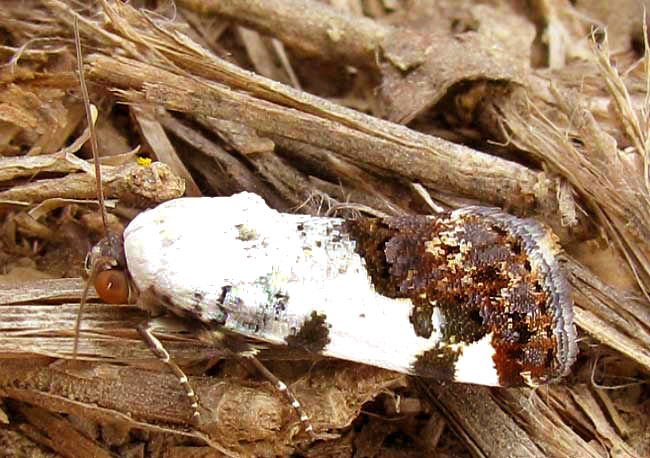Excerpts from Jim Conrad's
Naturalist Newsletter

from the March16, 2009 Newsletter, issued from the forest near Natchez, Mississippi; elevation ~400ft (120m), ~N31.47°, ~W91.29°:
EXPOSED BIRD-DROPPING MOTH
Much less eye-catching but maybe more interesting was a little fellow who also showed unusual "curiosity" about us as we hiked down that same levee, shown above.
That's the Exposed Bird-dropping Moth, ACONTIA APRICA*, a member of the Owlet Moth Family, the Noctuidae.
I'd never have been able to identify this moth without guessing that any English name it might have would need to include the words "bird-dropping," because of the moth's resemblance to that useful stuff. By doing an image search on the keywords "bird dropping moth" I soon came up with a match.
Plenty of images of the species occur on the Internet, for it's distributed throughout most of the US. However, there's little lifecycle information, other than a note from Covell's Field Guide to The Moths of Eastern N. America that its larvae feed on Hollyhocks. In the refuge I saw no Hollyhocks but the levee was littered with dead stems of many closely related Swamp Rose-Mallows of the genus Hibiscus -- thus in the same plant family as Hollyhocks -- so probably the larvae eat hibiscuses, too. Maybe the adult in the picture had just emerged from a dead hibiscus stem where it had overwintered.
I have no idea what is so "exposed" about the Exposed Bird-dropping Moth. Something not showing well in the photo is that individual white scales in the wings' rear, dark regions sparkle in bright sunlight, as if the dropping were recently deposited.